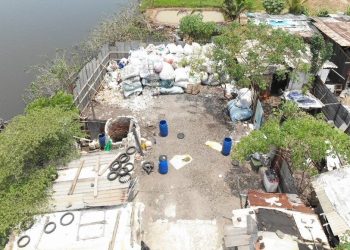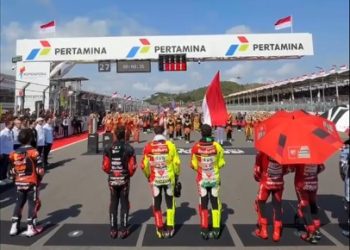Jakarta, Indonesia Sentinel — The Indonesian Central Statistics Agency (BPS) announced that the average life expectancy in Indonesia for 2024 has reached 74.15 years. This means that babies born in 2024 are expected to live an average of 74.15 years.
“Life expectancy at birth has increased to 74.15 years, indicating that newborns in 2024 are projected to live up to that age,” said Acting Head of BPS, Amalia Adininggar, during a press conference at the BPS headquarters on Friday, November 15.
According to BPS data, the life expectancy at birth in 2024 shows a slight increase of 0.22 years compared to 73.93 years for those born in 2023. This figure also marks a 0.78% improvement over the life expectancy recorded in 2020, demonstrating consistent growth over recent years.
The rise of 0.22 years or 0.30% from the previous year is notably higher than the average annual growth rate of 0.25% observed between 2020 and 2023. Detailed figures show a steady climb in life expectancy: 73.70 years in 2022, 73.46 years in 2021, and 73.37 years in 2020.
Human Development Index Factors
According to BPS data released on Friday, November 15, 2024, Indonesia’s Human Development Index (HDI) for 2024 rose to 75.02, reflecting an increase of 0.63 points or 0.85% compared to the previous year’s score of 74.39
Life expectancy is a crucial component of Indonesia’s Human Development Index (HDI). The HDI is composed of three key dimensions: life expectancy, education, and a decent standard of living.
Education Metrics
The education dimension of the HDI is measured through two indicators: the Expected Years of Schooling (HLS) for individuals aged seven and above, and the Mean Years of Schooling (RLS) for those aged 25 and older.
Amalia detailed that in 2024, the HLS for Indonesian children aged seven is projected to be 13.21 years, while the RLS for adults aged 25 and above stands at 8.85 years.
“The mean years of schooling at 8.85 years suggests that Indonesians aged 25 and over have, on average, attained education equivalent to the third year of junior high school. Meanwhile, the expected years of schooling at 13.21 years indicate that children aged seven today are anticipated to receive education up to the second year of college,” Amalia explained.
Indonesia Milk Imports Surge, Reaches Over 250.000 Tons Troughout 2024
Both education indicators have shown continuous improvement. Between 2020 and 2024, the HLS increased at an average annual rate of 0.44%, while the RLS saw a more significant rise of 1.07% per year.
The HLS in 2024 improved by 0.06 years or 0.46% from 2023, surpassing the average growth rate of 0.43% from 2020 to 2023. Similarly, the RLS increased by 0.08 years or 0.91% from the previous year.
For context, the HLS in previous years was 13.15 years in 2023, 13.10 years in 2022, 13.08 years in 2021, and 12.98 years in 2020. The RLS was recorded at 8.77 years in 2023, 8.69 years in 2022, 8.54 years in 2021, and 8.48 years in 2020.
Improved Living Standards
In addition to education and life expectancy, the HDI is also influenced by living standards. Acting Head of BPS Amalia Adininggar Widyasanti highlighted that the adjusted annual per capita real expenditure for 2024 is estimated at Rp12.34 million, or approximately Rp.02 million per person per month.
This marks an increase of Rp42,000 or 3.71% from 2023, where the per capita real expenditure was Rp1.89 million annually, or Rp90,800 per month.
These improvements across life expectancy, education, and living standards reflect Indonesia’s ongoing efforts to boost its human development metrics, signaling positive trends in the nation’s socio-economic landscape.
(Raidi/Agung)


























